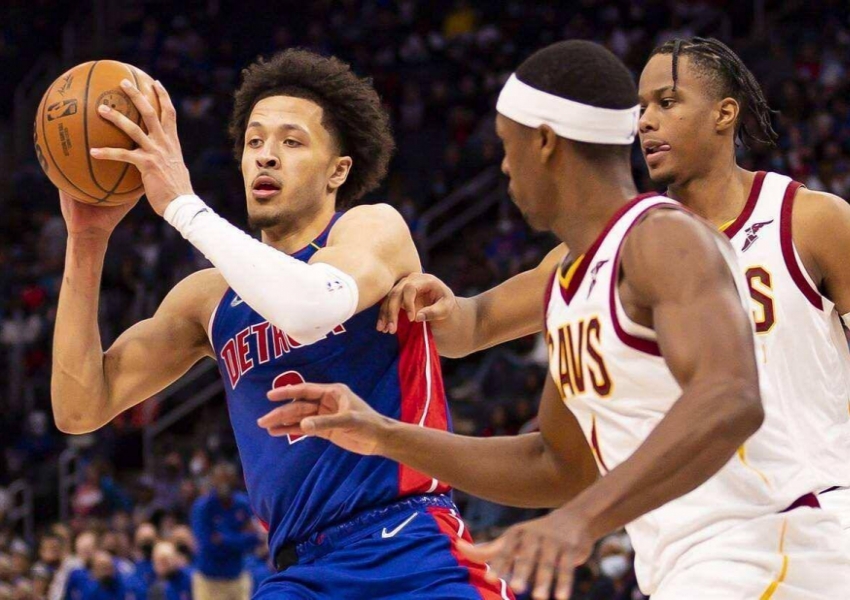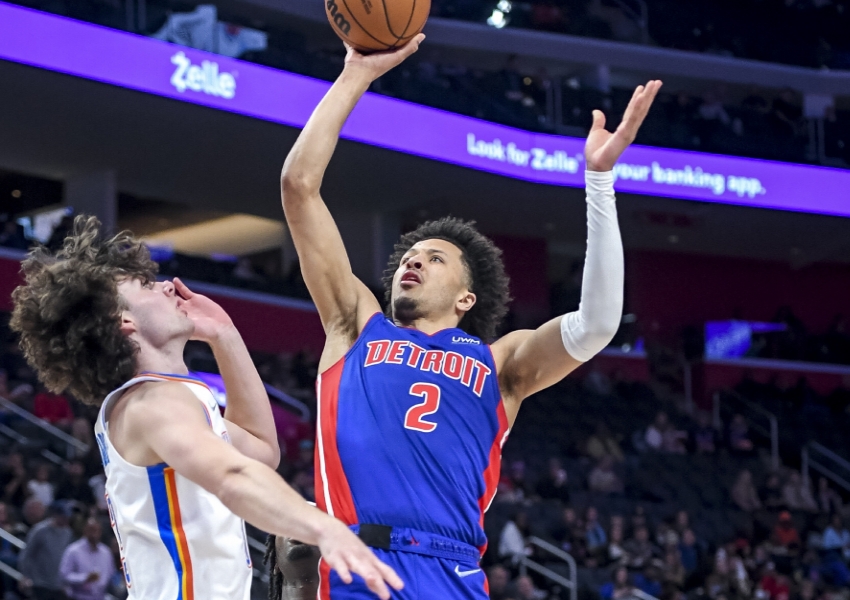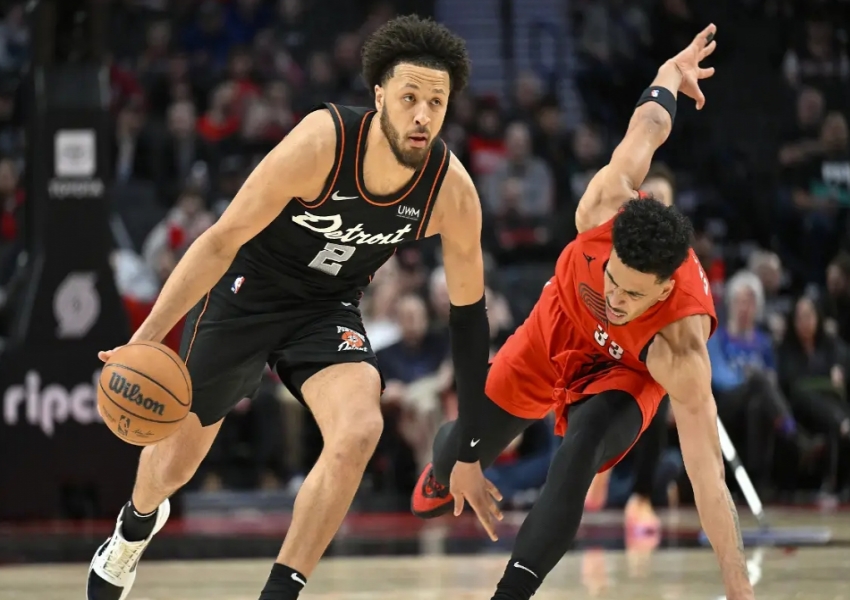Bust or Unfulfilled Potential? Three Seasons of Cunningham: Two Last-Place Finishes, One Second-to-Last
"I'm 99.9% sure Cunningham will get an extension this offseason. I won't say 100% because you never know what might happen, but if the 2021 top pick doesn't get a max contract, I'll be shocked." These were the words of Pistons beat reporter Edwards. So, what is Cunningham's max contract? Five years, $225 million. Yes, you read that right, an average salary of over $40 million, higher than 99% of the league's stars. For instance, Luka Dončić barely hits $40 million, Kyrie Irving is around $37 million, and Jayson Tatum just over $30 million. The question then arises: Does Cunningham deserve such a high salary based on his current performance?

When evaluating rookies, we typically consider two aspects: current level and future potential. Even if a player hasn't fully realized their potential, if there's a clear path to greatness, high salaries are often justified. Let's delve into Cunningham's performance.

Personal Statistics
2021-2022 Season: Cunningham averaged 17.4 points, 5.5 rebounds, 5.6 assists, and 1.2 steals per game, with a shooting percentage of 42% and a three-point shooting percentage of 31%.

2022-2023 Season: His stats improved to 19.9 points, 6.2 rebounds, 6.0 assists, and 0.8 steals per game, maintaining a shooting percentage of 42% but with a decline in three-point shooting to 28%.
2023-2024 Season: Cunningham's numbers further increased to 22.7 points, 4.3 rebounds, 7.5 assists, and 0.9 steals per game, with improved shooting percentages of 45% from the field and 36% from three-point range.
As the undisputed core of the Pistons, Cunningham has ample ball-handling opportunities each night. Especially in the past two seasons, his usage rate has never dropped below 30%. However, his conversion rate has been quite average. For instance, on the offensive end, his true shooting percentage has hovered around 50%, making him one of the least efficient players in his position. Even in his most efficient season, he only ranked higher than Jalen Green, Scoot Henderson, Jordan Poole, and Jordan Clarkson.
Playmaking and Turnovers
Cunningham has demonstrated some ability to organize the offense, but it is not yet fully developed. He has a high turnover rate of 14.1% and an assist-to-turnover ratio of only 2.2, similar to players like Coby White of the Bulls and Draymond Green of the Warriors.
Team Performance
Under Cunningham's leadership, the Pistons finished last in the league twice and second-to-last once over three years. Out of the 138 games he played, they only won 32. Even with the addition of coach Monty Williams from the Suns, the Pistons' struggles persisted, achieving just 14 wins in a season and setting a record with a 28-game losing streak.
Some might argue that the Pistons' roster is mostly composed of inexperienced players, making it difficult to achieve good results. However, looking at the stats, when Cunningham is on the court, the Pistons' offense scores 2.5 more points per 100 possessions, but the defense allows 0.9 more points per 100 possessions. This data suggests that Cunningham's presence doesn't significantly impact the team's performance. In comparison, during the 2019-2020 season, Trae Young averaged nearly 30 points and 10 assists per game and did not lead the Hawks to the playoffs, yet his on-court presence was undeniable. The Hawks scored 14.1 more points per 100 possessions when Young played, highlighting his importance.
While Trae Young can blame the team's poor record on his teammates, Cunningham does not have that luxury. From the current standpoint, this might already be Cunningham's ceiling. Unlike Trae Young or Luka Dončić, who can serve as primary ball-handlers and franchise cornerstones, Cunningham seems more suited to be a solid second option. Due to his lack of elite physical attributes, he can't excel in both individual offense and playmaking while handling a high volume of possessions. If we judge him by the standards of a second or third option, Cunningham is indeed outstanding. But can such a role justify a $200 million contract?
Future Potential
The future outlook for Cunningham is uncertain. His physical attributes don't give him an edge, and his efficiency and playmaking abilities haven't reached elite levels. While he's shown flashes of brilliance and improvement, the consistency required to lead a team to success is still in question. For Cunningham to be worth a max contract, he needs to significantly enhance his efficiency, reduce turnovers, and become a more impactful player on both ends of the court.
The comparison with other young stars like Trae Young and Luka Dončić is inevitable. Both Young and Dončić have proven they can be the primary options for their teams, leading them to playoff contention and displaying the potential to be generational talents. Cunningham, on the other hand, has yet to show that he can carry a team in the same way.
Conclusion
In conclusion, while Cade Cunningham has shown potential and improvement in his three seasons with the Detroit Pistons, the justification for a max contract remains debatable. His current performance and future potential suggest that he may be better suited as a second or third option rather than a franchise cornerstone. For the Pistons, the decision to offer Cunningham a max contract will depend on his ability to elevate his game and prove that he can lead the team to success. Until then, the question of whether he is a bust or simply yet to fulfill his potential remains open.
Copyright Statement:
Author: focusnba
Source: FocusNBA
The copyright of this article belongs to the author. Reproduction is not allowed without permission.
Recommended Blog
- KD Bows Out Again: Is Team USA's Olympic Dominance in Jeopardy?
- Sudden Trade Decision! Farewell, Top Pick! Major Transfers Loom in CBA Offseason
- 6-for-1 Blockbuster Trade? Warriors Go All-In for Kawhi Leonard! No Other Choice...
- 21+9+5 Per Game! Rockets' Future Cornerstone: Is Alperen Şengün Worth a Max Contract?
- 100 Points Against Jokic! Farewell, China Basketball! Japan Emerges as Asia's Top Powerhouse
- Spurs Trade 5-for-1 for Ingram? The NBA Just Got Wilder in the West
- NBA Expands to the East: Zion Williamson Has the Last Laugh
- Keep an Eye on Him! NBA's Top "Championship Puzzle Piece," 2 Titles in 4 Years, Set to Become a Free Agent This Summer
- The Only "Bust" Among Top Pick Guards? Markelle Fultz Struggles with Consistency After 7 Seasons
- "In Jail in 5 Years? Out of the NBA in 3? Sorry, He's Now Gunning for a Championship and FMVP"